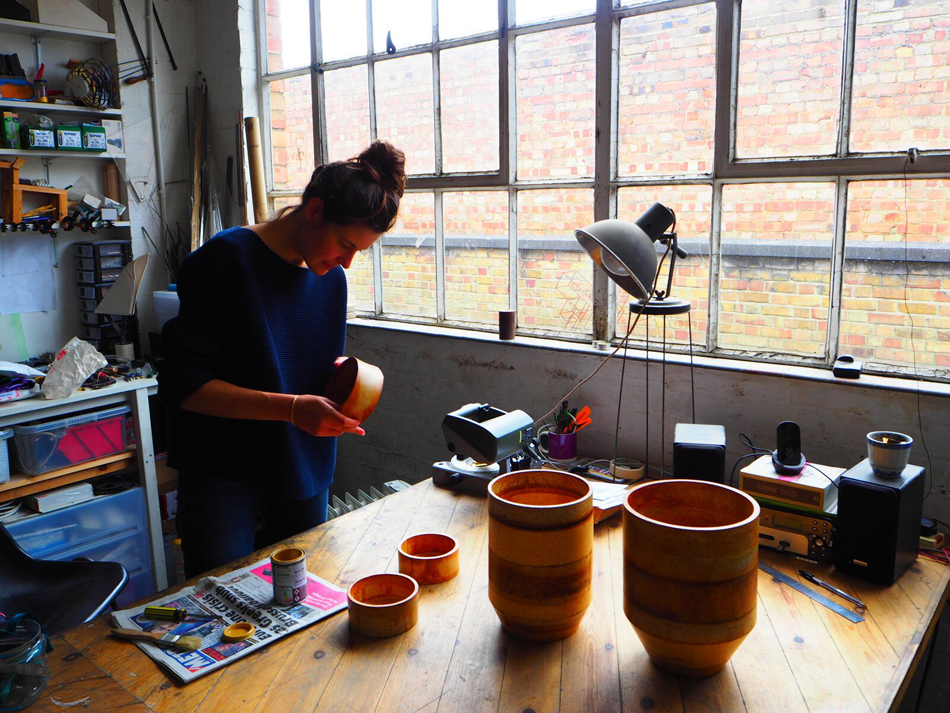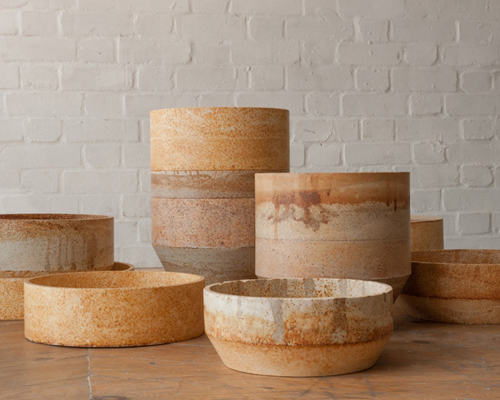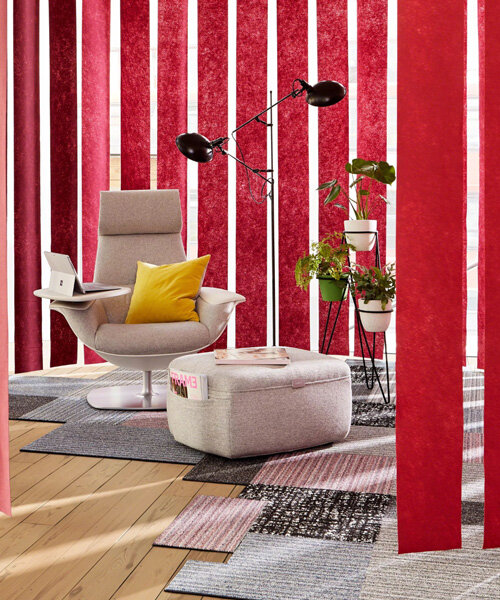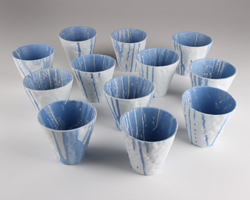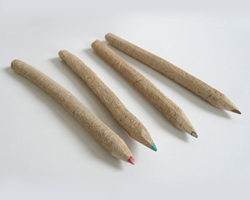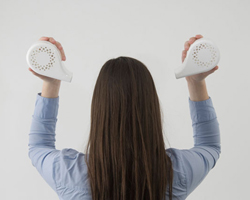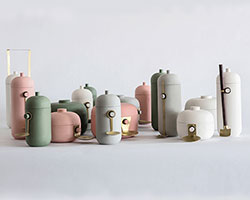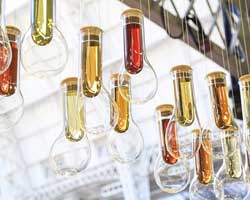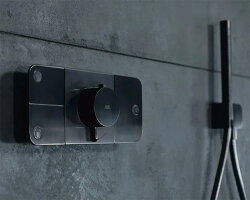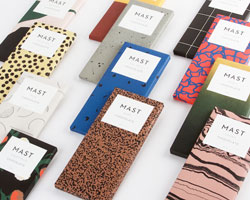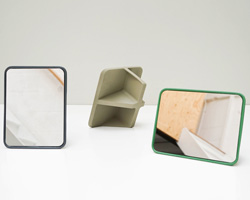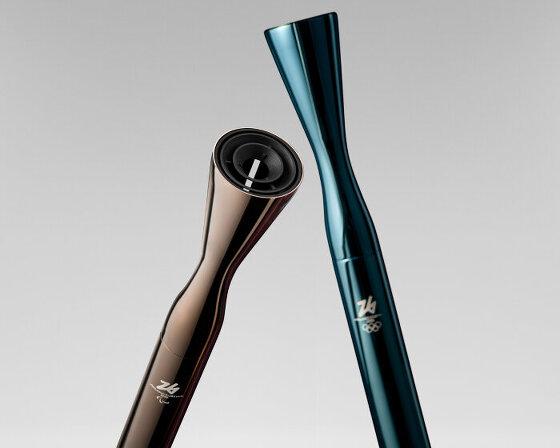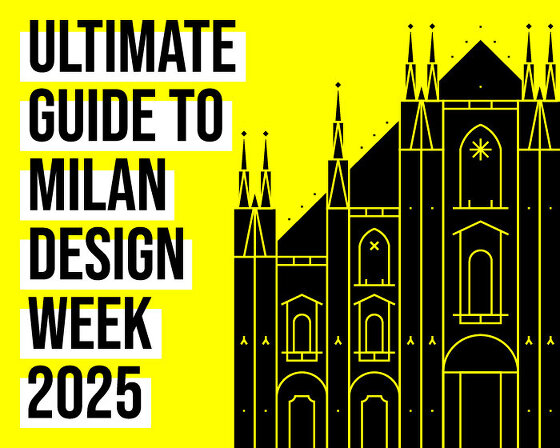ariane prin mixes metal dust with plaster + resin to form rust homeware
ariane prin has a knack for giving commonly disregarded waste materials new form and utility, as seen in her ‘from here to here’ project in which she produced pencils using waste from different departments from london’s royal college of art taking — from which the bodies were comprised of sawdust from the wood workshop, clay from the ceramic department and flour from the cafeteria, with graphite taken from the glass department. her ‘rust’ series is no exception.
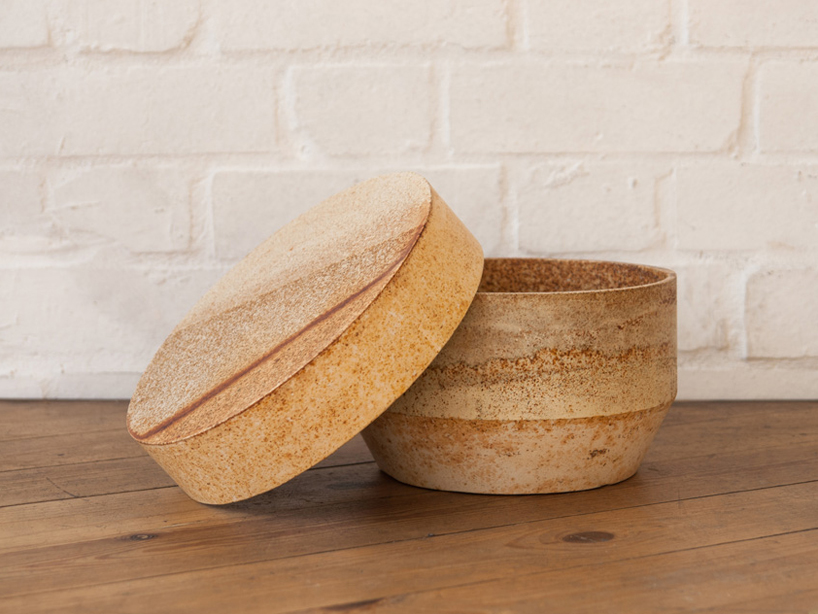
the ‘rust’ collection vessels are made from a combination of metal dust mixed with plaster and jesmonite
the first homeware collection for the london-based designer, ‘rust’ is a range of vessels (jewelry boxes, pots, trays, vases etc.) whose oxidized and corroded appearance which informs its name, is a result of combining metal dust — taken from key cutting and other metalworking workshops across london — with plaster and jesmonite.
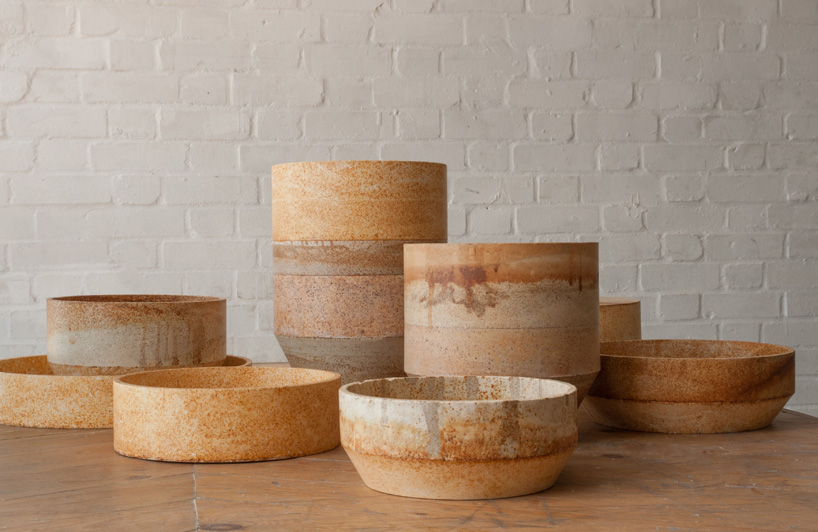
the homeware collection is comprised of jewelry boxes, pots, trays and vases
ariane prin on the process of developing ‘rust’:
‘it takes us about three days to complete a piece in ‘rust’. that is no considering the rusting time and the high variability of the process — I often reject and recycle pieces in the production when I’m not happy with the result. but every time I go to my studio I’m excited to see the objects’ changing textures. it’s like each one of them was alive and mutating with time.
the shapes I chose for the RUST range are extremely simple. I wanted to let the material and its visual articulation be the heroes of this series of products.’
‘rust’ makes its debut at ariane prin’s first solo show at herrick gallery shoreditch (from september 19th-27th), as well as at the ‘matter of stuff‘ exhibition (september 24th-27th) at the hospital club, during the 2015 london design festival. on this occasion ariane prin will also be launching her new website prin.in. stay tuned!
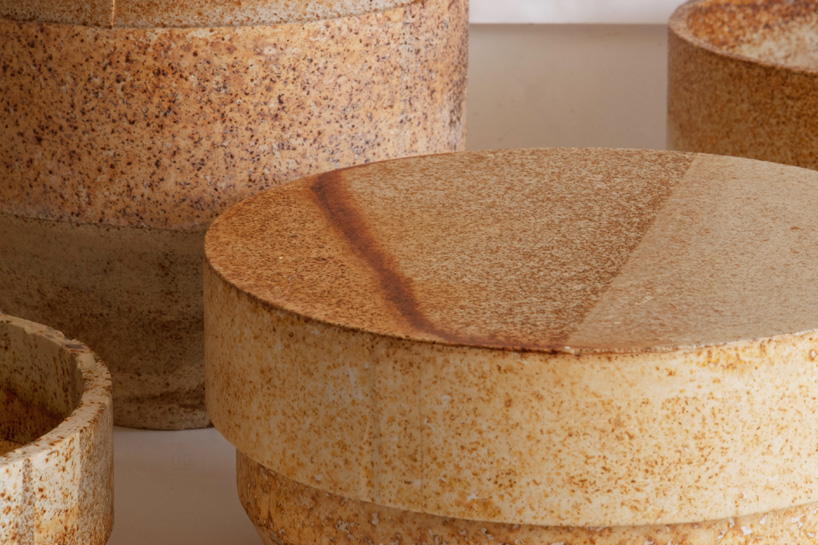
detail of the vessels’ corroded and oxidized appearance
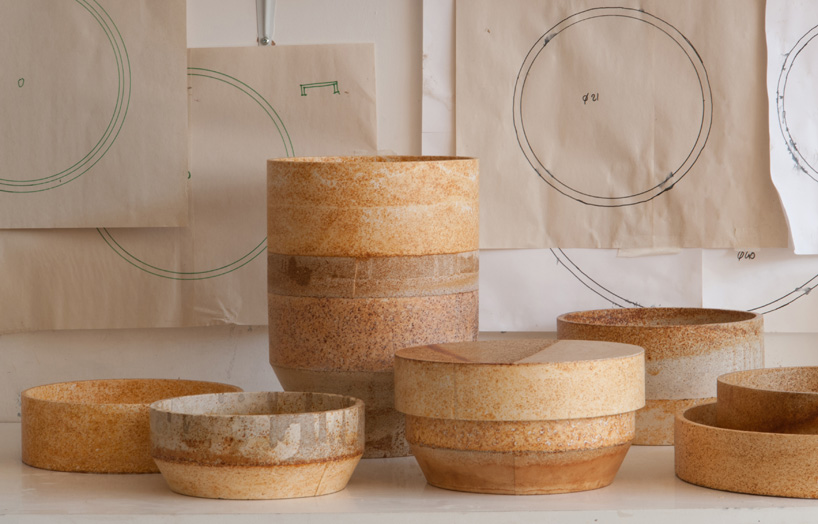
the designer has left the forms of the vessels simple so that the material and visual finish take centre stage
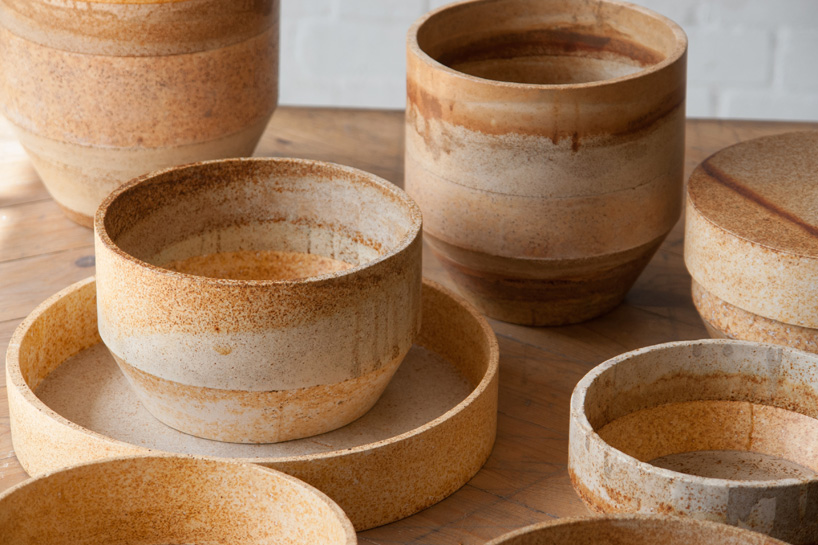
each piece is unique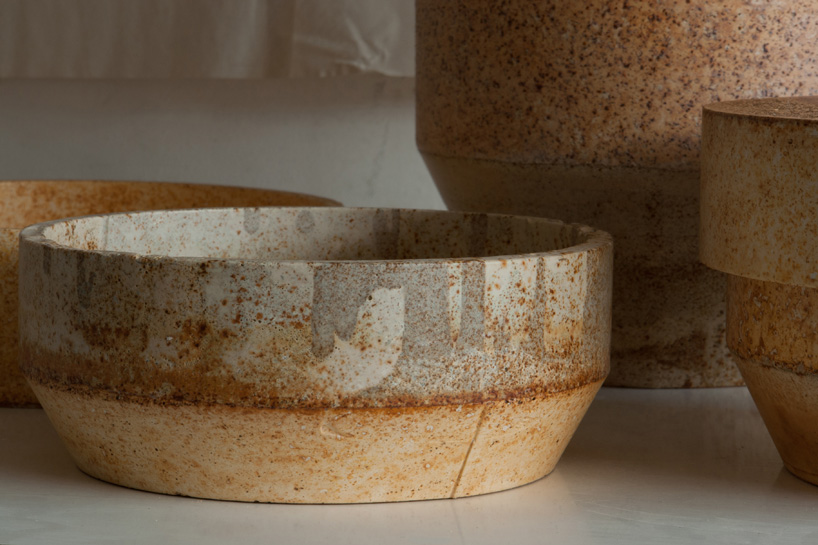
upclose look at the resulting ‘rust’ finish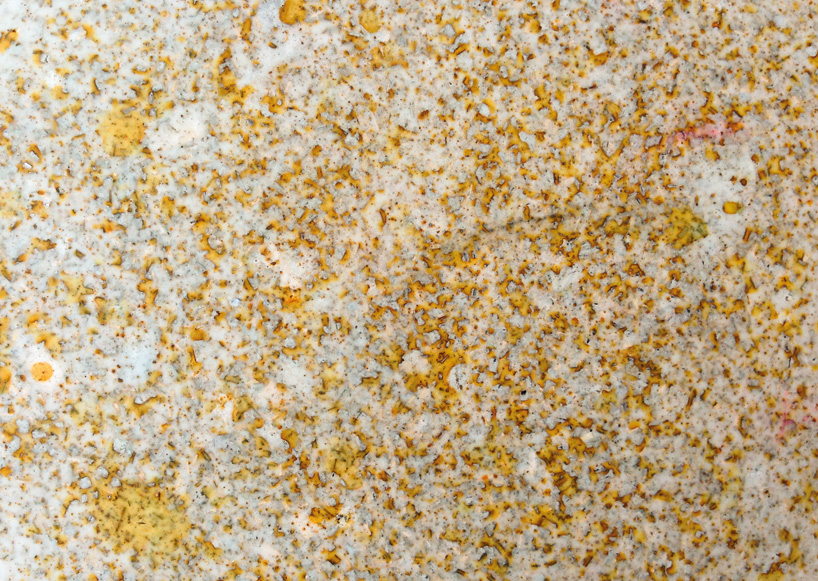
sample of a ‘rust’ finish
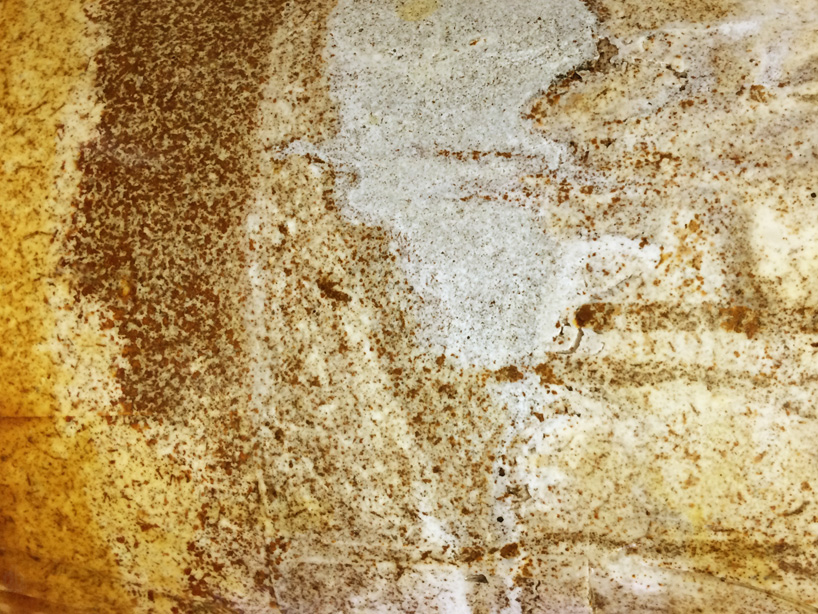
the ‘rust’ exhibits different tones of orange and brown creating depth in the vessel’s surface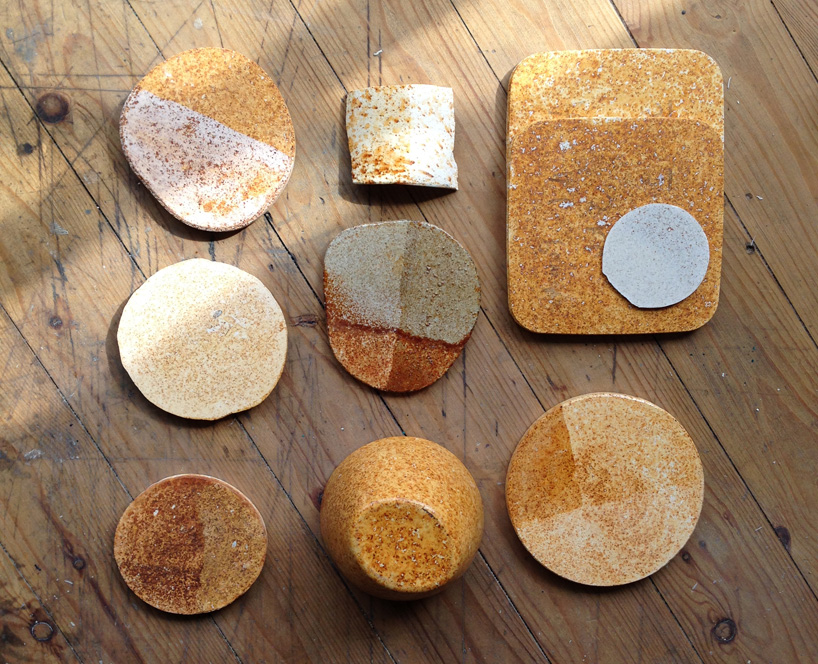
finishing samples











